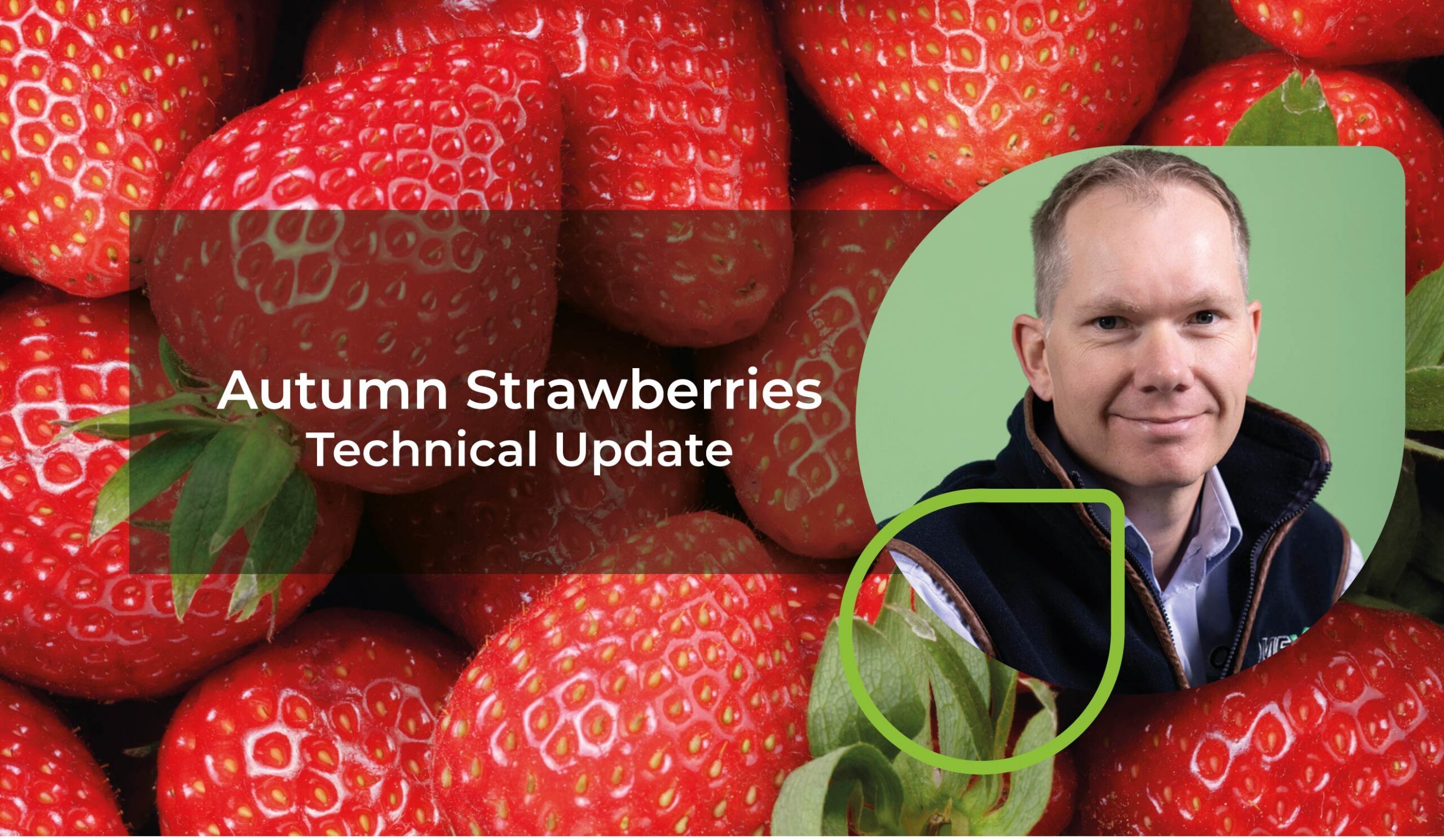Soft Fruit Agronomist, Dr Neil Holmes, takes a look at Autumn Strawberry crops in his latest technical update:
Autumn strawberry crops benefited from higher-than-normal temperatures in September and early October, but as autumn progresses brix development can become a challenge.
Key to effective brix development is to encourage carbon dioxide assimilation at the same time as relatively higher light levels, which can be artificially increased with supplementary lighting. To ensure carbohydrate synthesis is optimised, consider applying either potassium sulphate (K 41) or potassium carbonate (K 50) as a foliar feed. Either product will provide plant-available potassium, which is used to control stomata opening and consequently, the ingress of carbon dioxide and carbohydrate synthesis.
Foliar applications of Kelpak (Ecklonia maxima, kelp extract) have been shown to increase plant size with more side crowns and more flowering positions present when flower mapped (Delphy, 2018). So not only will Kelpak help with current abiotic stresses, but it will also help develop the plant for the spring crop.
If you would like further information, please contact your local OMEX technical advisor, here.
Reference:
- Jongenelen. (2018). Effect of Kelpak on everbearing strawberries. Delphy.
